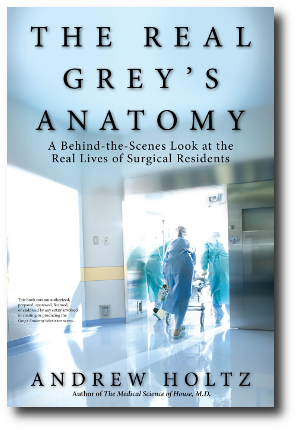On Inauguration Day 2009, I watched the ceremony and parade from an operating room. On the table was a woman without health care insurance who had delayed treatment for fear of bankrupting her family.
 |
| whitehouse.gov |
Here's what I wrote about that day, as it appeared in The Real Grey's Anatomy book:
On Inauguration Day, cancer surgeon Kevin Billingsley is preparing to remove a suspected tumor from a
woman. Scans up on the wall monitors show how the mass is pushing aside all the
other organs in the woman’s abdomen. It might not have been so big, if the
woman had been treated earlier.
“I first saw this patient about two weeks ago, she had
delayed treatment,” Billingsley says. “Her biggest concern was not, ‘Am I
going to die from this cancer,’ but, ‘Is this going to bankrupt me and my
family?’”
The patient, Diane Hinds, later recalls the events leading
up to her surgery. She had been feeling rundown for several months. She thought
her swelling midsection was just weight gain. She didn’t go to see a doctor.
Her husband’s job doesn’t pay much and doesn’t include any health care
insurance. Eventually the swelling got to be too much. She went to a local
emergency room. After a day of tests and examinations she was told that there
was a large mass that might be cancer. The bill that came with that frightening
news was $6,000.
No one would treat her as long as she couldn’t pay. She
applied for Medicaid and other programs without success.
“I had gone to every place that I could think of to get some
kind of assistance. I had just sort of accepted the inevitable. And I told my
family the same thing.” She had recently watched her brother die of cancer
despite nearly a million dollars worth of treatment. “There's no way I could
ever pay for it, and even if I could, I would bankrupt my whole family. I'm 64
and I just thought, ‘Why bother?’ That's the way I felt. I was pretty down and
out.”
Her oncologist sent her to see Kevin Billingsley. She listened to his
assessment and proposed treatment. She declined.
“He couldn’t understand why I would turn down a chance to
have my life saved. I said, ‘I don't have insurance. I don’t have that kind of
money.’ He came right out and told me, ‘My job is a surgeon.’ I said, ‘I
realize that. I just want you to know where I'm coming from. I'm not against
medicine, I'm not afraid of the surgery or anything, but let's be practical
here with the issue of paying for it.’”
Billingsley referred her to administrators at OHSU who
reviewed her situation. She submitted her financial and other information. When
the financial assistance staff determined that she did not qualify for Medicaid
or other coverage and couldn’t afford to pay for necessary treatment, the
hospital agreed to write off almost all of the cost of her care. On average,
the hospital says it provides $15 to 20 million worth of charity care each year
and also writes off almost $20 million of bad debts. It adds up to about 5
percent of the net patient revenue.
So Diane Hinds got her surgery. And there was more good
news: the mass was not a tumor after all. It was a hematoma, a collection of
clotted blood. It was still a threat as it squeezed her pancreas, spleen and
other organs to the side, but no it’s gone and Hinds doesn’t have to worry
about lingering cancer cells. She says the recovery has been slow and steady.
Despite everything she’s been through, she marvels at how
Billingsley and the hospital treated her even though she
couldn’t pay them.
“How I got so fortunate, I don’t know,” she says.
During the procedure, a computer monitor at the nurse’s desk
was showing coverage of the new President walking to the White House. In the O.R. there were wishes that
someday they would no longer see patients delaying care and suffering because
they couldn’t afford to get treatment.
--------------------------
Four years on, some things are changing. In just over 11 months, almost everyone with lower incomes will be eligible for subsidies that will cap how much they pay for basic health care insurance. By the next Inauguration Day, we may know whether the expansion of coverage reduces the number of people in the United States who feel they are faced with a choice of bankruptcy or death.

No comments:
Post a Comment